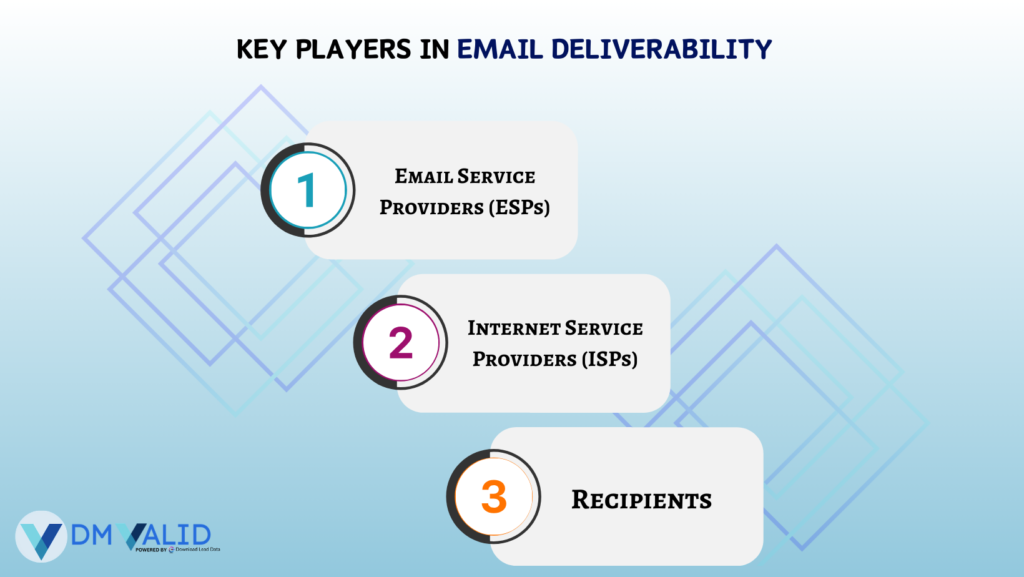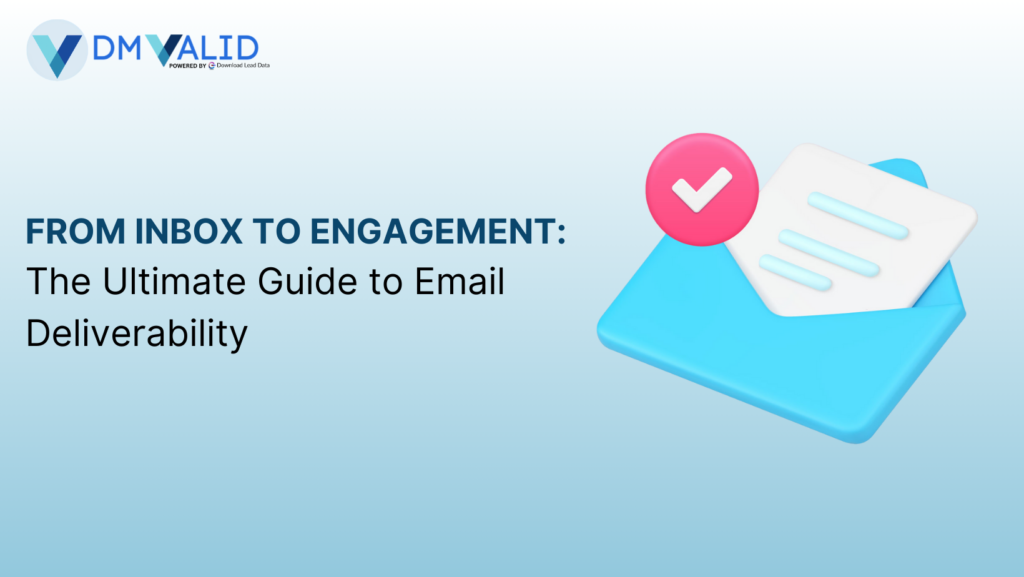Table of Contents
Introduction
Marketers love email. No matter what new technology or app is trending, email is still one of the top tools in a marketer’s toolbox. That’s why email deliverability is so key.
What is Email Deliverability?
This may seem like a silly question. The goal of email deliverability is to get your email delivered, right?
But there’s more to it than that. Let’s say your latest email report says you have a 98% deliverability rate. Sounds good, right? But the deliverability rate is missing one important piece.
You don’t want to just get your email delivered. You want to get your email to your customer’s inbox. The real goal of email deliverability is good inbox placement.
Email deliverability is the ability of your emails to get to the recipient’s inbox instead of the spam folder or getting rejected by the email server. It’s a big part of email marketing because it determines if your message lands where it’s supposed to be seen and engaged.
Key Metrics:
- Delivery Rate: The percentage of emails that get to the recipient’s inbox out of the total sent.
- Open Rate: The percentage of recipients who open your email out of those who received it.
- Click-Through Rate (CTR): The percentage of recipients who click on links in your email.
Why Email Deliverability Matters

Engagement:
If your emails don’t get to the inbox, they can’t be opened, read or interacted with. High deliverability is key to maintaining high engagement rates and making sure your marketing message gets to your target audience.
Brand Reputation:
Good deliverability over time helps build and maintain a good reputation with email service providers (ESPs) and internet service providers (ISPs). A bad reputation can lead to more spam filtering and lower inbox placement rates.
Return on Investment (ROI):
Good email deliverability can boost your ROI by making sure your marketing gets to the right people and drives the right actions. Higher deliverability means more people are seeing your emails and better conversion rates.
The Journey of an Email
Sending the Email:
When you send an email, it first goes to your email service provider (ESP). The ESP handles the sending and makes sure the email is formatted correctly and follows best practices.
ISP Processing:
The email then goes to the recipient’s ISP, which checks its legitimacy and reputation. ISPs use various algorithms and filters to decide if the email should go to the inbox, spam folder or get rejected.
Inbox Delivery:
Once the email passes the ISP’s filters, it gets to the recipient’s inbox. At this point the recipient can view, open and interact with the email.
Understanding the Basics
How Email Deliverability Works:

Email deliverability is a complex process to get your emails to your recipient’s inbox. Here’s a quick breakdown of the steps:
Email Sending:
When you send an email, it goes to your email service provider (ESP). The ESP formats the email, content and delivery settings.
Email Transmission:
The ESP then sends the email to the recipient’s ISP. The email goes through multiple servers and security checks during this process.
ISP Evaluation:
The ISP checks the email using various criteria including sender reputation, content quality and authentication protocols. This evaluation decides if the email should go to the inbox, spam folder or get rejected.
Inbox Delivery:
If the email passes the ISP’s filters it gets to the recipient’s inbox. The recipient can then view, open and interact with the email.
Key Players in Email Deliverability

Email Service Providers (ESPs):
ESPs are platforms that send and manage your email campaigns. They handle the technical side of email delivery and often provide tools to track and improve deliverability.
Internet Service Providers (ISPs):
ISPs are the companies that provide internet access to users. They manage email traffic and use various filters and algorithms to check the legitimacy and reputation of incoming emails.
Recipients:
Recipients are the end-users who receive and interact with your emails. Their behavior such as opening and clicking on emails affects your email deliverability and sender reputation.
Common Terms to Know
Bounce Rates:
Hard Bounce: Permanent delivery failure, usually due to an invalid email address or domain.
Soft Bounce: Temporary delivery failure, often due to a full mailbox or temporary server issues.
Spam Traps:
Spam traps are email addresses used by ISPs to identify spammers. They can be valid email addresses that are no longer active or ones created to catch spammers.
Blacklists:
Blacklists are lists of IP addresses or domains that are known to send spam or malicious emails. Being on a blacklist can hurt your deliverability.
Why You Need to Know This
Better Troubleshooting: Knowing how email deliverability works helps you fix issues when your emails aren’t getting to recipients as expected.
Better Tactics: Knowing the key players and terms helps you develop tactics to improve your email deliverability and overall email marketing.
Reputation Management: Knowing common deliverability issues and how to fix them helps you maintain a good sender reputation and better email performance over time.
Summary and Key Points
Email deliverability is a part of email marketing that decides if your messages get to your recipient’s inbox. Knowing the basics of email deliverability, how emails are processed, the key players and common terms is crucial for your email campaigns.
Summary:
Email Deliverability Basics: How your emails get from sender to inbox and the role of ESPs, ISPs, and recipients in this process.
Key Metrics: Delivery rate, open rate, and click-through rate are the metrics to measure your email campaign performance.
Common Issues: Knowing bounce rates, spam traps and blacklists helps you fix and prevent deliverability issues.
Good Reputation: Good list management, authentication and content relevance is key to a good sender reputation and high deliverability.
Actionable Steps for Readers
Clean Your Email List:
Update and clean your email list regularly to remove invalid or inactive addresses. Use email verification tools to validate.
Enable Authentication:
Set up SPF, DKIM and DMARC to increase your email’s credibility and reduce spam chances.
Check Deliverability Metrics:
Use analytics to track your delivery rate, open rate and click-through rate. Measure these to improve your campaign.
Email Content and Design:
Make sure your emails are well designed and relevant to your audience. Use great subject lines and personalized content to improve open and click-through rates.
Bounce Reports:
Check bounce reports regularly to fix issues. Distinguish between hard and soft bounces and take action accordingly.
Content Writer at DM Valid
Asifa Khanum is a Content Specialist at DM Valid. I fulfilled roles in marketing that shaped her interest in finding innovative solutions to modern-day problems.



